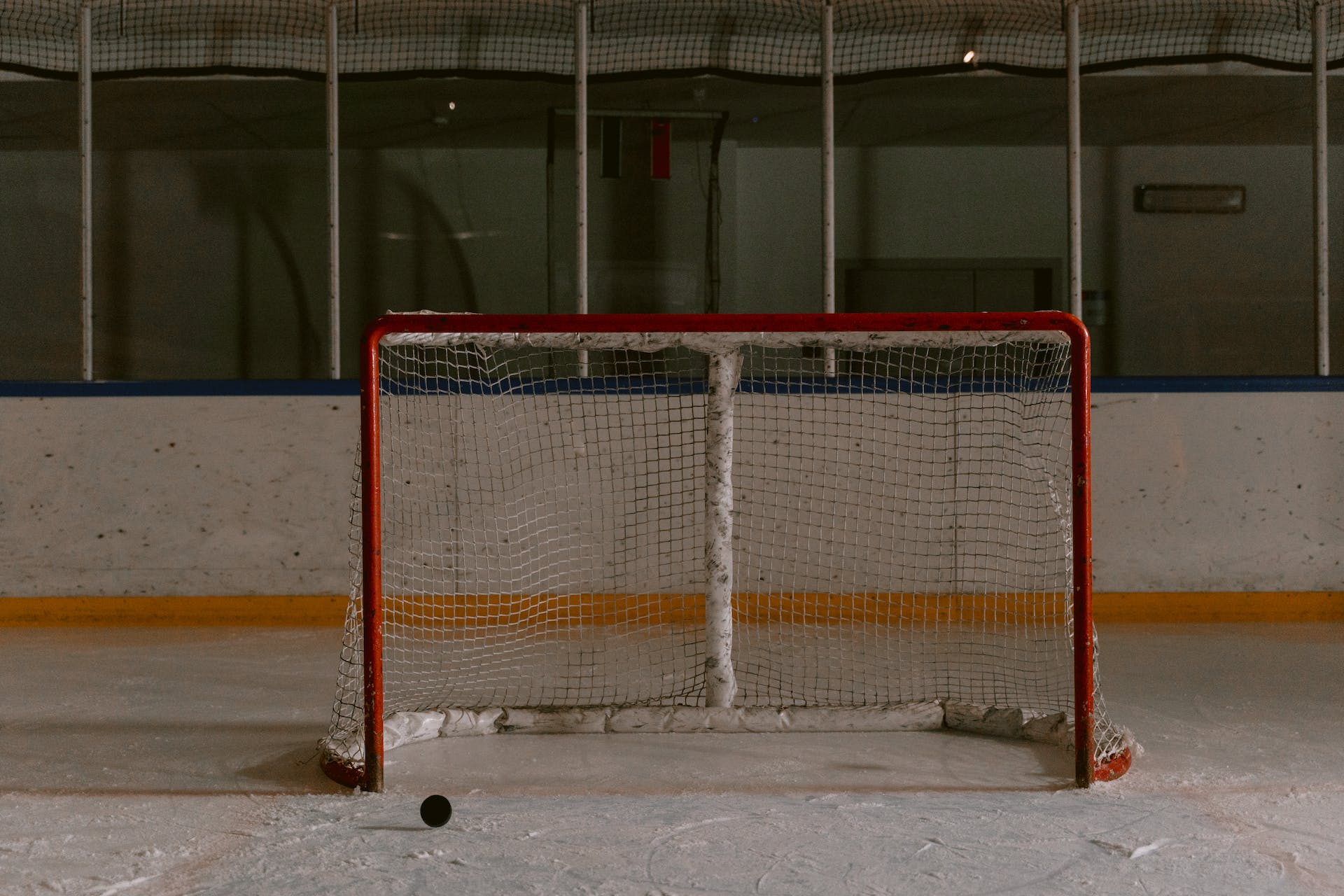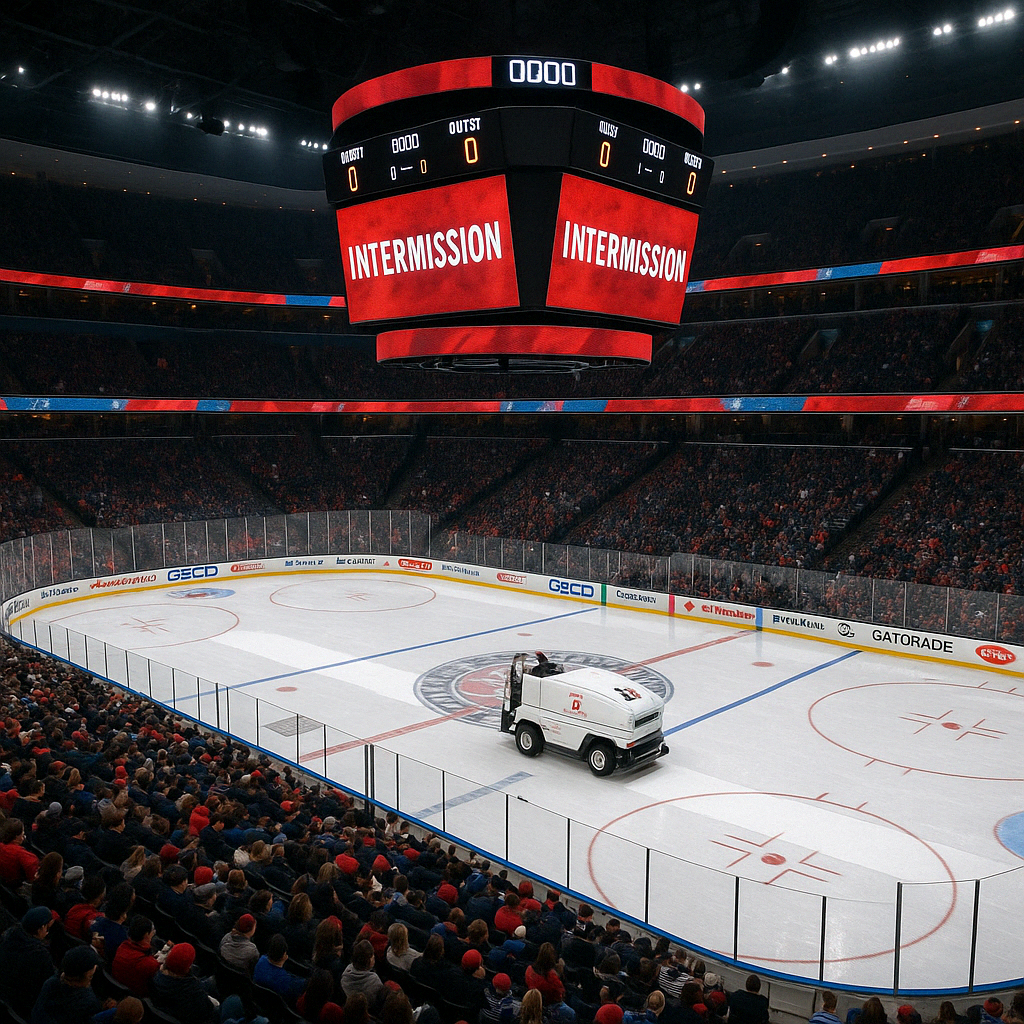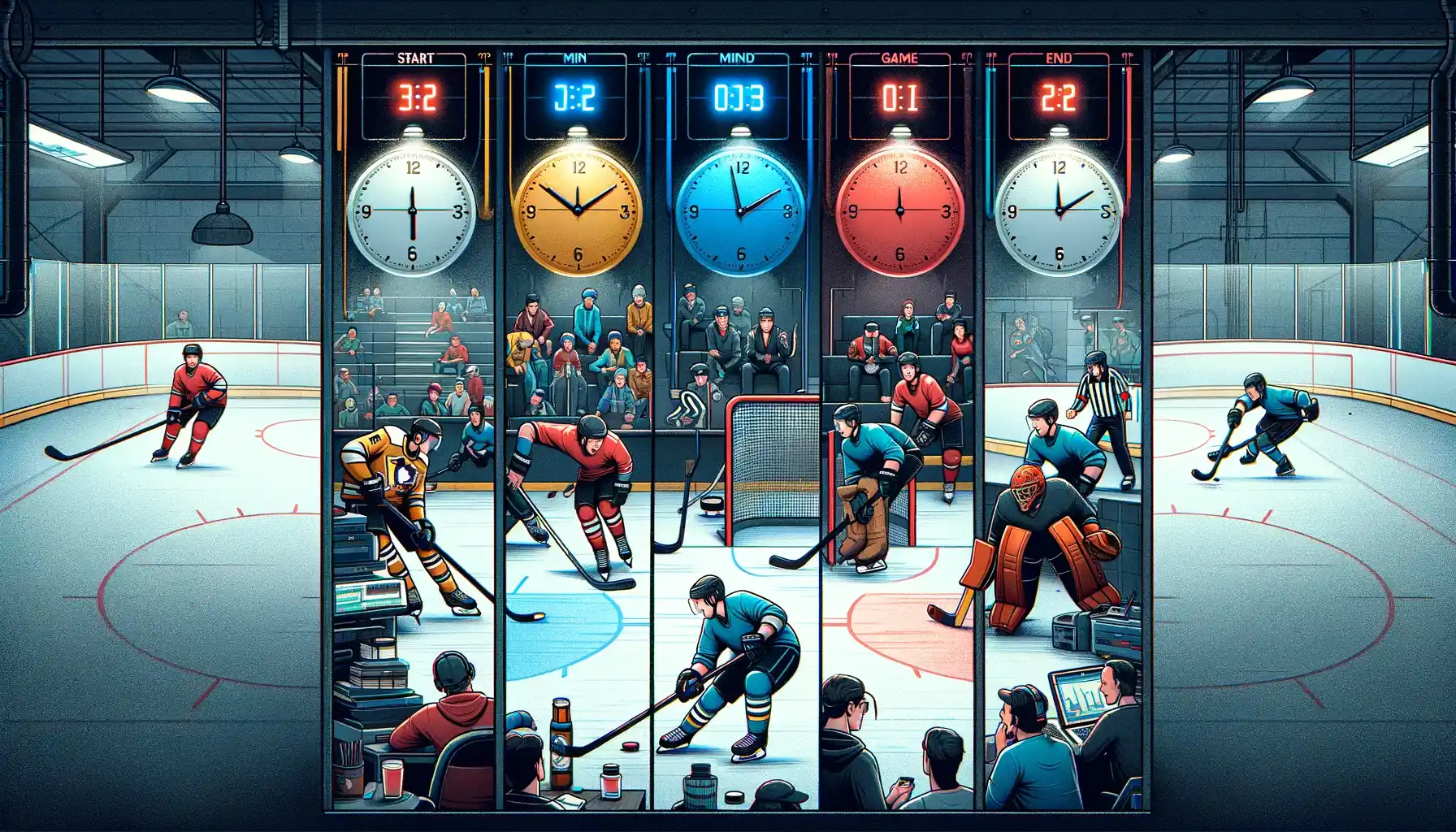In hockey, the smallest pieces of gear can make the biggest impact—and few are more underappreciated than the fight strap. Sewn into the back of a player’s jersey and fastened to their pants, this feature is far more than a technical add-on. It’s a critical piece of equipment that supports safety, enforces fairness, and helps regulate one of hockey’s most debated traditions: fighting.
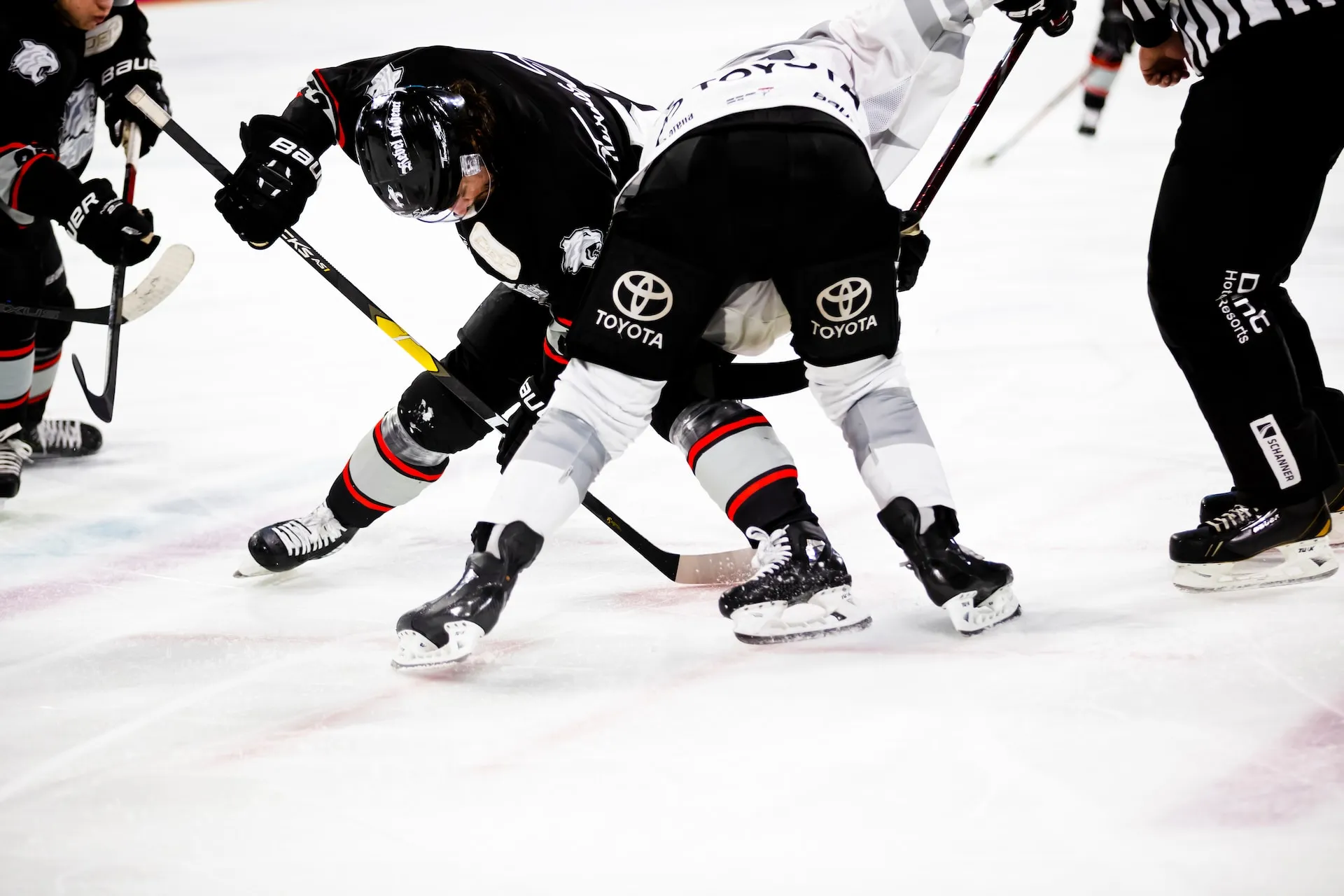
What is Hockey Fight Strap?
A hockey fight strap is a reinforced loop of fabric—typically made from nylon, polyester, or cotton—stitched into the lower back of a jersey. Its purpose? To securely attach the jersey to the back of the player’s hockey pants. This prevents the jersey from being pulled over the head during a fight, a maneuver that once gave players an unfair advantage and put their opponents at greater risk.

How It Works: From Fabric to Fastening
Most modern fight straps use Velcro or metal snap buttons to fasten the jersey to the pants. Some premium designs also feature clip locks or adjustable lengths for a more tailored fit. These attachment points are strong enough to withstand the pulling and grappling that occurs during a hockey fight, yet flexible enough to allow freedom of movement throughout the game.
Fight straps typically measure between 8 and 18 inches depending on the player’s build and preference, with shorter straps offering a snugger, more secure hold and longer ones allowing for extra mobility. Materials vary as well—nylon offers durability and moisture resistance, while cotton provides comfort but may wear faster. Polyester blends strike a balance between the two.
Why Fight Straps Matter: Player Safety & League Rules
Fighting in hockey isn’t gone—it’s just evolved. The 2024–2025 NHL season still logged nearly 300 fights, with 267 players involved. That’s a clear sign that fight straps remain necessary. Without them, jerseys can be weaponized—pulled over players’ heads to gain an unfair advantage. That tactic, once common, made it harder for players to defend themselves mid-fight.
To address this, the NHL enacted Rule 46.13. It states that a player whose jersey comes off during a fight will receive a game misconduct if it wasn’t properly tied down. This makes the fight strap both a compliance tool and a safety measure.
History: From the “Rob Ray Rule” to Standard Equipment
Before fight straps became standard, hockey fights could get dangerously one-sided. Players like Rob Ray were notorious for slipping out of their jerseys to escape holds or frustrate opponents. His tactics led to the NHL introducing the so-called “Rob Ray Rule” in the early 1990s, which mandated that jerseys remain secured with a fight strap.
The result was a shift in hockey culture—where skill and toughness were expected to go hand in hand, without players gaining cheap advantages by ditching their gear. That rule still stands today and has made the fight strap a permanent fixture in pro jerseys.
Authentic Jerseys vs. Replicas: Spotting the Difference
Authentic NHL jerseys include a fight strap as standard equipment, while replicas typically do not. For fans collecting or wearing jerseys off the ice, the fight strap might not serve a functional role—but it remains a hallmark of pro-level authenticity. Removing it won’t harm the jersey, but for collectors, it’s often seen as part of the jersey’s identity and integrity.
Key Functions of a Fight Strap
-
Prevents jersey from being pulled over the head during a fight
-
Keeps player visibility and mobility intact during physical altercations
-
Ensures compliance with NHL Rule 46.13
-
Enhances player safety and game fairness
-
Connects securely via Velcro, snaps, or clips to the pants
-
Rare but possible failures may lead to hockey penalties if improperly secured
Different Types of Hockey Jersey Fight Straps
Choosing a fight strap isn’t one-size-fits-all. Players have different needs depending on their body type, gear preferences, and position. Here’s how fight straps vary by material, length, and attachment method—and what each variation offers.
By Material
-
Nylon: Lightweight, moisture-resistant, and very durable. Nylon is the most common choice in pro-level gear.
-
Polyester: Slightly softer than nylon, but still strong. Offers good breathability and moisture control.
-
Cotton: Comfortable and breathable, but prone to wear and moisture absorption. More common in recreational settings than pro play.
By Length
-
Short (8–10 inches): For a tighter fit and reduced slack—ideal if you want minimal movement in your jersey.
-
Standard (11–14 inches): Works well for most players. Balances flexibility with security.
-
Long (15–18 inches): Best for taller players or those who wear longer-cut jerseys.
By Attachment Method
-
Button Snap: Secure and traditional, though slower to fasten.
-
Velcro: Fast and adjustable, offering flexibility for quick gear changes.
-
Clip Lock: Extra security with minimal fuss. Ideal for high-contact players who want max reliability.
To give you a clearer understanding, here’s a quick comparison of fight straps based on different categorizations.
| Material | Length | Attachment | Best For | Durability (1–5) |
|---|---|---|---|---|
| Nylon | Short (8–10″) | Snap | Quick, high-contact | 4.5 |
| Polyester | Standard | Velcro | General play | 4 |
| Cotton | Long (15–18″) | Clip | Casual practice | 3 |
How to Attach a Fight Strap?
Once you’ve chosen your preferred fight strap, attaching it properly is the next step. Though methods can slightly vary depending on the brand and type of strap, the general procedure remains fairly consistent:
- Locate Attachment Points: On the inside of your hockey jersey, you’ll find sewn-in loops or patches meant for attaching your fight strap.
- Choose Attachment Method: Depending on the type of fight strap you have (button snap, Velcro, or clip), align it with the corresponding attachment point.
- Secure the Strap: If it’s a button snap, snap it onto the loop. For Velcro types, align and press firmly. With clips, insert and lock into place.
- Adjust Length: Some straps come with adjustable lengths. Make sure the strap pulls the jersey snugly against your body but allows freedom of movement.
- Test: Before getting onto the ice, do a quick movement test to ensure the jersey remains secure.
Next, we’ll explore how fight straps vary in importance depending on your position—forward, defense, or goalie—and why that matters when choosing the right setup.
Fight Strap Importance by Player Role and League Level
While fight straps may look like a minor detail, their impact varies significantly depending on your position on the team—and the level of play you’re in. Below, we break down why this detail matters differently for forwards, defensemen, goalies, and players across amateur to pro hockey.
By Player Position
Forwards
Forwards are most likely to find themselves in high-traffic areas, battling along the boards or in front of the net. These players tend to get into the most scuffles, making a reliable fight strap a must-have. A properly secured jersey ensures that speed and mobility aren’t compromised during physical altercations.
Defensemen
Defenders often engage in board battles and physical net-front play. Longer or more flexible straps may be preferred here, especially for defensemen with larger builds or more protective gear. While they’re less likely to fight than forwards, a secure jersey can help maintain balance and positioning.
Goalies
Goalies rarely engage in fights—but when they do, the stakes are high. A goalie’s oversized jersey makes it more susceptible to being pulled, which is why goalies tend to opt for shorter, stronger straps. These are often integrated into specially designed goalie jerseys.
Let’s break down the significance of fight straps depending on your role on the team.
| Player Position | Importance | Common Strap Type | Why It Matters |
|---|---|---|---|
| Forwards | High | Nylon, Standard | Frequent fights, high-speed movement |
| Defensemen | Medium | Polyester, Long | Board battles, positional contact |
| Goalies | Low | Cotton, Short | Rare fights, oversized jerseys |
Learn more about different player positions in hockey
Level of Play
Amateur Leagues
In recreational or youth leagues, fight straps might not be mandatory—but starting to use one early builds good habits. It’s also a subtle sign of respect for the game’s safety traditions.
Semi-Pro Leagues
Here, regulations tighten. Having a properly installed strap becomes more of a requirement, and not wearing one could mark you as unprepared or lacking attention to detail.
Professional Leagues (e.g., NHL)
In the NHL, a missing or improperly fastened fight strap can lead to a game misconduct penalty under Rule 46.13. That’s why every pro-level jersey is outfitted with one—and why pre-game gear checks include fight strap inspections.
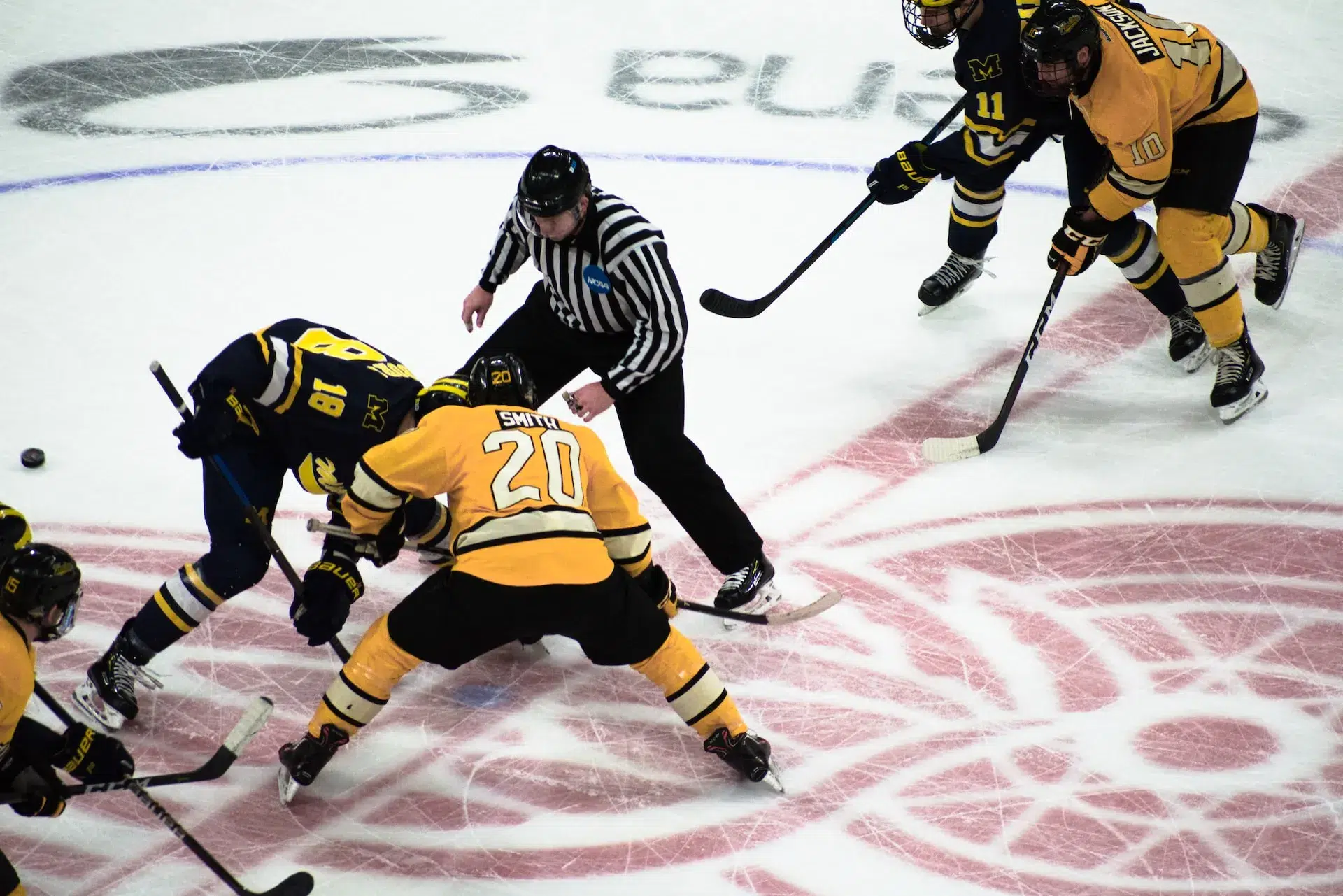
Leading Brands
Not all fight straps are created equal. Here are a few top-rated hockey brands trusted by players at all levels:
A&R
Known for reinforced stitching and reliable build quality. Affordable and available in multiple lengths.
Bauer
Offers straps with multiple attachment points and strong fasteners. Designed with pro usage in mind.
CCM
Focuses on comfort and performance, with adjustable options and high durability ratings.
Warrior
Known for innovation—quick clip systems and multiple anchor points make these straps popular with aggressive players.
| Brand | Average Price | Notable Features | User Rating (out of 5) |
|---|---|---|---|
| A&R | $15–$20 | Reinforced Stitching | 4.5 |
| Bauer | $20–$25 | Multiple Attachment Points | 4 |
| CCM | $20–$30 | Adjustable Length | 4.2 |
| Warrior | $25–$35 | Quick Clip Lock | 4.1 |
Special Features
As you evaluate options, here are the bonus features that can significantly elevate your gear setup:
Reinforced Stitching
Great for players who frequently find themselves in scrums. Added stitching reduces tear risk during tugs and tackles.
Multiple Attachment Points
Some modern designs allow for two or more points of connection—helpful for taller players or those with more dynamic gear setups.
Adjustable Length
Not all straps are one-size-fits-all. Adjustable-length straps let you tailor the tension to your movement style, jersey cut, and body type.
These added features are especially useful for higher-level players or anyone looking to optimize both comfort and compliance.
Learn more about hockey equipment features
Rules, Regulations & the Culture of Fight Straps
As much as fight straps are about function, they also reflect hockey’s long-standing traditions and evolving safety standards. From official rulebooks to locker room codes of conduct, understanding the regulations and culture surrounding fight straps adds depth to this unique piece of gear.
League Rules & Penalties: What You Need to Know
In professional leagues like the NHL, fight straps are mandatory—and there are real consequences for not using them correctly.
NHL-Specific Rules (Rule 46.13)
If a player’s jersey comes off during a fight and it wasn’t properly secured by a fight strap, that player receives a game misconduct penalty. However, if the strap was attached and failed due to force, no penalty is assessed—but the league may inspect the gear afterward.
Navigating the rulebook can be complex; this table simplifies what you need to know about fight strap regulations.
| Rule/Regulation | Penalty for Non-Compliance | Level of Play | NHL Specific Notes |
|---|---|---|---|
| Mandatory Fight Strap | Game Misconduct | NHL, Semi-Pro | Required to be fastened pre-game |
| Proper Attachment | Game Misconduct | NHL, Semi-Pro | Subject to official review |
| Absence of Strap | Equipment Violation Warning | Amateur | Typically unenforced in rec leagues |
| Strap Failure (During Play) | No Penalty (If was attached) | NHL | Equipment may be reviewed post |
The Cultural Impact: From Utility to Identity
A Symbol of Toughness & Fair Play
Fight straps are now viewed as a badge of legitimacy—especially among collectors and fans. For players, it’s not just a loop of fabric. It’s a symbol of being ready for anything while playing by the rules.
Influence on Gear Design
The inclusion of fight straps in authentic jerseys has also influenced apparel and gear design. They’re now often reinforced with customized stitching or built into tailored jersey cuts. You’ll even find their design aesthetic referenced in hockey-themed fashion.
Fight Strap FAQs: Quick Answers for Curious Fans
Why do players get penalties during fights?
Penalties maintain game integrity. Excessive force, targeting vulnerable players, or failing to follow equipment rules can result in major penalties or misconducts.
Why do players grab jerseys in a fight?
To control balance, land punches more effectively, or protect themselves defensively. The jersey grab is part of the fight dynamic.
What’s the white strap on NHL jerseys?
That’s the fight strap. It attaches the jersey to the pants to prevent it from being pulled off during altercations.
Are fight straps required in amateur hockey?
Not always. Rules vary by league. However, many players at the amateur level still use them for added safety.
Should I remove the fight strap from a retail jersey?
Only if you want to—but many collectors prefer to keep it on for authenticity. Removing it can also lower the resale value.
How do I choose the right fight strap?
Look for a material that balances durability and comfort. Make sure it’s the right length for your jersey and compatible with your pants’ attachment points. Adjustable and reinforced versions offer extra reliability.
The hockey jersey fight strap is a fascinating part of a player’s uniform. Discover more about jerseys and other apparel in our detailed overview of Hockey Clothing Brands.
Can a fight strap fail during a game?
It’s rare, but yes. When it does, refs may assess whether the strap was properly secured. A failure won’t lead to a penalty if everything was in place pre-game.
What’s the best brand for fight straps?
Top choices include A&R, CCM, Bauer, and Warrior—each offering different features like adjustable lengths, reinforced seams, or quick-release clips.
Buyer’s Checklist: Choosing the Right Fight Strap
Choosing a hockey fight strap isn’t just about grabbing whatever’s on the shelf. The right choice can mean better comfort, safety, and compliance on the ice. Here’s a quick checklist:
-
Material: Nylon for durability, cotton for comfort, or polyester for balance
-
Length: Short for a tight fit, long for taller players or more range of motion
-
Attachment Method: Velcro for quick fixes, snaps for security, clips for heavy-duty reliability
-
Special Features: Reinforced stitching, adjustability, or multiple attachment points
Final Thoughts: Small Strap, Big Impact
For your next game or even your next jersey purchase, don’t overlook the humble fight strap. It’s a small component that plays a major role in both player safety and hockey culture. Whether you’re suiting up or just suiting your jersey for display, choosing the right strap is one more way to stay connected to the game’s spirit.
Guide to Buying Hockey Equipment


